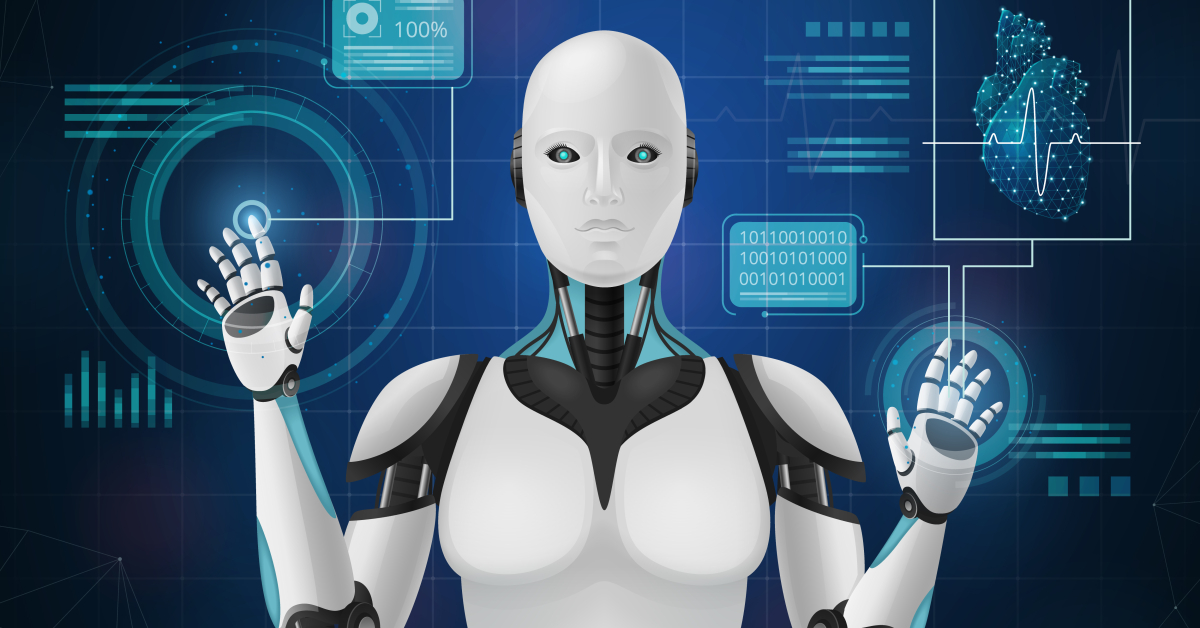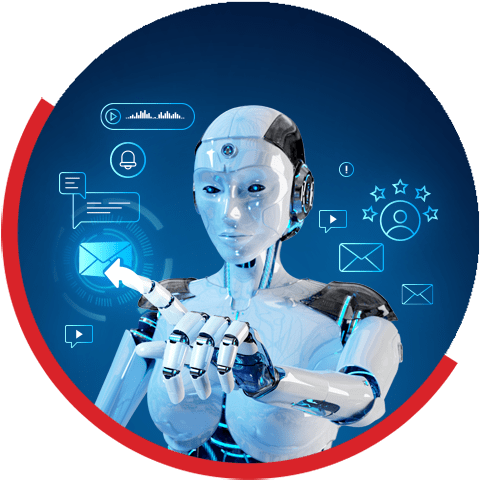AI & ML to Generate Better Customer Response
The buzzwords AI and ML are so prevalent today in the 21st century, being often referred to as the birth of the AI Revolution and data becoming the new oil. AI/ML has the potential to change all the factors of industry by allowing them to acquire measurable results.
But how many of us know that it was founded in the year 1956? Yes, you read that right! The term "AI" was first authored by Arthur Samuel, an American IBMer, in 1959. Since that time, a number of mechanisms have been designed, including a large number of researchers and technicians, which resulted in ML becoming a subdivision or part of AI.
Introduction
For example, artificial intelligence (AI) is the intelligence demonstrated by machines as opposed to natural intelligence displayed by animals, including humans.
For example, a chess-playing programme or a smart assistant, whereas machine learning (ML) is the field of study using algorithms that can learn automatically through experience and data.
Basically, it finds patterns in the data and uses them to make decisions, for example, image search and translation tools.
Currently, AI/ML

At present, we are surrounded by AI due to its capability to solve enormous problems. Organizations are introducing AI and ML for their faster growth, which has led to the advancement of this technology, thereby opening more job opportunities as well.
From online shopping to Zomato, from Amazon's Alexa to self-driving cars, from Facebook to Netflix, AI can be found everywhere.
Companies that use AI/ML
AI is an emerging technology. Companies like Google, Rare Caret, Under Armor, Facebook, Amazon, IBM, Microsoft, PwC, Gartner, and the list goes on, are using AI/ML in practise due to the benefits that it brings.
Almost all companies are leveraging AI to provide next-level products and services and to become the world’s leaders in AI.
Few Use Cases of AI/ML
Day-to-day data, also known as big data, plays a very major role in generating valuable insights from the data that is created on a day-to-day basis or what we call big data.
Due to these technologies, which can analyze our data and extract the customer’s behavioural patterns in the blink of an eye, organisations have been achieving increasing benefits, which has led to the increase in customer satisfaction.
Getting the desired customer response, controlling and automating the floods of data, which is now manageable with automated systems offering an increase in revenue by reducing costs and upgrading the business services and offering digital services.
It is being utilised to change the current business. Whether it is retail or consumer goods, healthcare, telecommunications, finance, insurance, the automotive industry or agriculture, the transformation is clearly visible.
Customer Expectations
Customer expectations are high and increasing. Power, as we know, has officially shifted to the customer, who expects seamless customer experiences across all platforms and devices. According to various surveys by McKinsey, Accenture, etc.
- 91% of consumers are more likely to shop with brands that recognize, remember, and provide personalised offers, services, and recommendations.
- 81% of buyers want brands to get to know them and understand when to approach them and when not to.
But today’s experiences fall short of customer expectations.
- 65% of customers feel alienated by inconsistent experiences across channels.
- 74% of customers are dissatisfied by the irrelevant content that they get exposed to on websites, which leads to a 40% higher drop rate from the website.
- Last year, 61% of customers left at least one company due to poor customer service.
It is important for companies to recognise their customers and to deliver a personalised experience that demonstrates they understand and value their customers to get the desired response from them. Today’s customers' purchase decisions revolve around their experience.
Better Customer Response Using AI/ML

Personalization
- Providing hyper-personalization at every customer interaction, customised information with personalised offers, services, and products to provide the right services, offers, and products at the right time and the right place.
- To get the desired response from the customer, thereby increasing customer engagement, improving sales, and customer loyalty.
- Based on the customer demographic and their behavior, including past transactions (purchases, returns), service calls, social media posts, etc., they get to see the hyper-personalized recommendations of relevant products and services for upsell and cross-sell opportunities.
Demand Forecasting
- The use of historical data to forecast future demand for goods and services.This can help in stocking the right product at the right place at the right time.
- Thereby reducing the inventory cost, opportunity loss cost, and improving customer satisfaction.
Sentiment Analysis
- The sentiment analysis of the customer’s posts, service emails, calls, interactions, and complaints can help us improve the existing services and products and identify customer trends and new product ideas.
- This is done through the NLP field of ML/AI, where we can do entity recognition, sentiment analysis, topic modeling, etc., at scale.
Customer Churn Prediction
- Acquiring new customers is often costlier than retaining old ones, so identifying customers who are at higher risk of churn and preventing this churn can help organisations reduce their costs.
- Customer Churn Prediction predicts the customers who are most likely to churn or leave in the coming days based on their behavior.
- We can target these customers by providing hyper-personalized recommendations on products, services, and offers to reduce customer churn.
Custom Segmentation
- Segmentation is the process of creating various clusters of customers that are homogeneous inside and heterogeneous with respect to other clusters.
- It helps marketing to design the right campaigns and promotions for each cluster, improving the customer response rate as campaigns and promotions will be relevant to specific clusters.
Visual Search
- It focuses on the image search capability, which enables users to search online using a particular image of the product.
- This search significantly reduces the time it takes to search for the product using keywords and can lead to lower cart abandonment and an increased conversion rate.
Web and Mobile Analytics
- In the present world, most customers are using the web and mobile phones to search, identify, and purchase.
- Due to this, web and mobile app analytics have become very critical to getting the right response from customers.
- It analyses the website data to track performance and behavioural data to reduce bounce rates and provide hyper-personalized products, services, and offers to customers.
Digital Signage
- With the help of AI, digital signage has moved to a new level by personalising its content to interact with customers in a unique way through focused campaigns, hence improving sales and overall revenue.
Facial Recognition
- It is a category of biometric software that uses AI/ML algorithms to identify and verify a person using facial features from a database.
- It is being used for security purposes, marketing, and sending targeted ads.
Conclusion
- BI and Analytics solutions for a leading national retailer of health and personal care products with customer segmentation using K-Means and hierarchical clusters.
- This helps in identifying profitable customers who are important to the retailer.
- And providing them with a quality experience at the store or other channels, and a recommendation system (User-based Collaborative filtering (Jaccard coefficient, Pearson's coefficient) and Markov Process Probabilistic recommendations) for each individual customer based on machine learning.
- The retailer ran more effective campaigns and targeted promotions and improved its understanding of customer preferences and purchasing behavior.
A Synopsis of Sonata’s Work
Sonata developed a Customer Churn model using decision trees and Naive Bayes algorithm for one of our clients, which provides the probability of customer churning in the near future, which can be used to target them with relevant promotions and recommendations to reduce churn probability.
Sonata has helped a leading world tour operator build a group-wide data platform that addresses complex data storage and exchange needs and enables AI/ML-driven business insights for the group ecosystem based on Web Analytics.
Sonata also developed a sentiment analysis model for our client which provided meaningful personal engagement with the AVA (adverb verb adjective) approach (bag of words).
Sonata Software has developed a buyer-intent approach that understands the user’s intent to buy and accordingly aligns the engagement for better conversion and market basket analysis using Apriori and Eclat algorithms to understand the customer's purchasing patterns, which enables our client to develop more effective products, pricing, and selling strategies.
It provided important information related to various KPIs like profitability, stock turn, stock outs, items per basket and transaction value. This has enabled store managers to invest in areas where the store is underperforming while continuing to improve in areas where it is performing well.
Sonata has helped a precision component delivery system leader improve inventory management efficiency with an AI/ML based Demand Forecasting Model using Time Series analysis and the Random Forest algorithm, which resulted in various benefits like enhanced sales with automated, accurate demand forecast.
Contact us now or submit the form below for a no-obligation conversation about your enterprise goals and digital agenda. Write to us today at azurehelpdesk@sonata-software.com.

